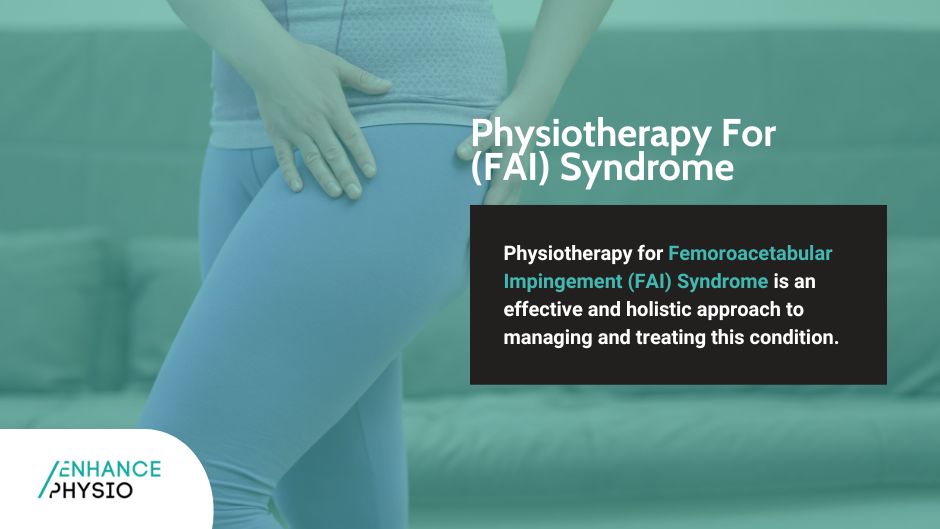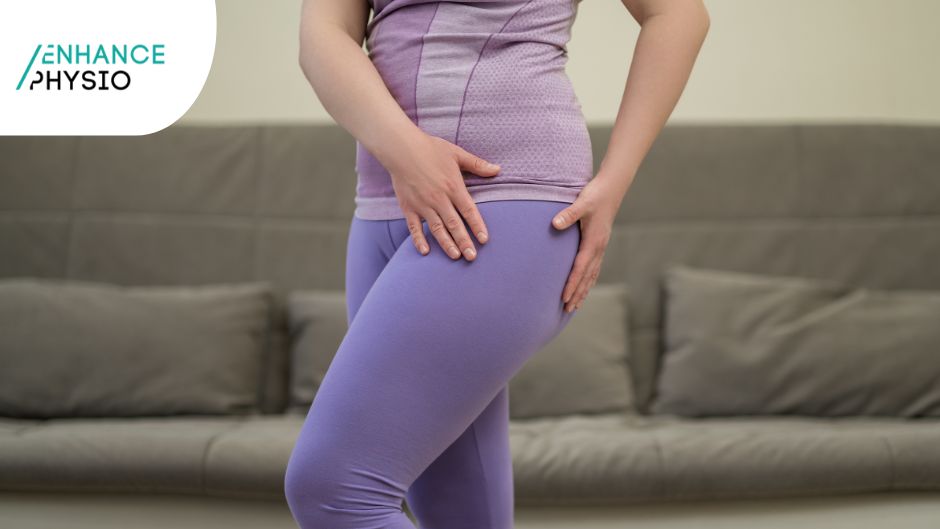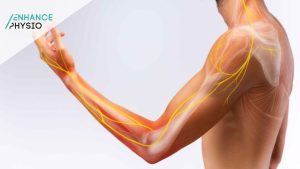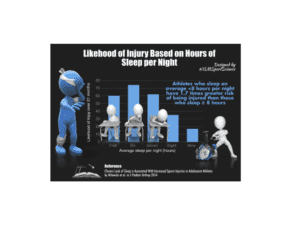Are you experiencing hip pain and a limited range of motion? You may be suffering from femoroacetabular impingement (FAI) syndrome.
It is a common problem, especially among young and active individuals. In the past, surgery was considered the only treatment option, but now, physiotherapy is emerging as a successful non-surgical alternative.
Physiotherapy plays a crucial role in the management of FAI. It focuses on reducing pain, improving hip function, and preventing further damage. If you have been diagnosed with FAI or suspect you may have it, understanding how physiotherapy can help you is essential.
What is femoroacetabular impingement syndrome?
Femoroacetabular impingement is a painful ailment caused by irritation and inflammation of the hip joint’s soft tissues. This can happen when the femoral head (the ball of the hip) rubs against the acetabulum (the cup of the hip joint).
This friction can cause damage to the joint, tendon, and/or the cartilage around the joint (known as the labrum) over time, resulting in discomfort, stiffness, and limited activity.
It could increase a person’s risk of acquiring chronic hip joint disorders such as osteoarthritis if left untreated.
As a result, prompt and efficient treatment is critical at all phases of hip impingement.
Common symptoms of femoroacetabular impingement syndrome
The most common sign of FAI is pain, which generally occurs in the groin or hip but can also occur in the buttock, lower back, thigh, or knee. The discomfort may develop during or after vigorous physical activity/sports such as soccer, basketball, or dancing, to name a few.
It can also occur while sitting for lengthy periods with the hips flexed at a 90-degree angle. FAI patients may also report stiffness or a sensation of “popping,” “clicking,” or “catching” in the afflicted hip.
FAI pain is frequently minor at first and can last for years. However, symptoms can rapidly intensify, resulting in terrible pain that prevents people from participating in sports or other physical activities.

Common causes of femoroacetabular impingement syndrome
FAI-related anomalies are frequently evident at birth. They can, however, emerge later in life, particularly throughout the adolescent years. There is little that can be done to avoid FAI when the hip bones are formed incorrectly.
Three anatomical variations might cause femoroacetabular hip impingement:
1. Pincer
Extra bone growth that extends over the rim of the acetabulum in the hip socket causes this sort of impingement. The prominent rim of the labrum may compress it.
2. Cam
In this sort of impingement, the ball seems more oval than round. This means that the head cannot move smoothly in the acetabulum, causing friction when the ball comes into contact with the edge of the socket. This repetitive friction might result in bony development on the joint’s head, adding to the impingement.
3. Combined or mixed lesion
This indicates that both the cam and pincer FAI types are present.
When both types of anatomical variations are present, they can cause pinching or impingement of the hip joint components, particularly the labrum surrounding the joint’s edge. This impingement of the hip joint can produce pain over time, especially when sitting for lengthy periods or during and after activity.
Physiotherapy treatment for femoroacetabular impingement syndrome
Physiotherapy is often the first line of treatment for FAI and can be very effective in managing the symptoms and improving function.
The goals of physiotherapy for FAI
- Reduce pain and inflammation.
- Improve hip range of motion and flexibility.
- Strengthen the muscles around the hip joint.
- Improve balance and proprioception.
- Optimise functional movements and activity levels.
Physiotherapy treatment may include:
- Patient education: Understanding the cause of your FAI and how to manage your symptoms is important for successful treatment.
- Relative rest: Avoiding activities that aggravate your pain is important in the early stages of treatment.
- Ice and heat therapy: Ice can help reduce inflammation, while heat can help improve flexibility.
- Manual therapy: Your physiotherapist may use hands-on techniques to improve joint mobility and muscle flexibility.
- Exercises: A personalised exercise program is essential for strengthening the muscles around the hip joint and improving functional movement. This may include exercises for:
- Hip flexors, extensors, abductors, adductors, and rotators
- Core muscles
- Balance and proprioception
- Electrotherapy: Modalities such as ultrasound or TENS can help to reduce pain and inflammation.

Final thoughts on physiotherapy for FAI syndrome
Physiotherapy for Femoroacetabular Impingement (FAI) Syndrome is an effective and holistic approach to managing and treating this condition.
By addressing the root causes, improving range of motion, and strengthening the hip muscles, physiotherapy can greatly alleviate pain and restore functionality.
If you’re suffering from FAI, don’t let it limit your lifestyle. Seek the guidance of a qualified physiotherapist and embark on your journey to a pain-free and active life today!





